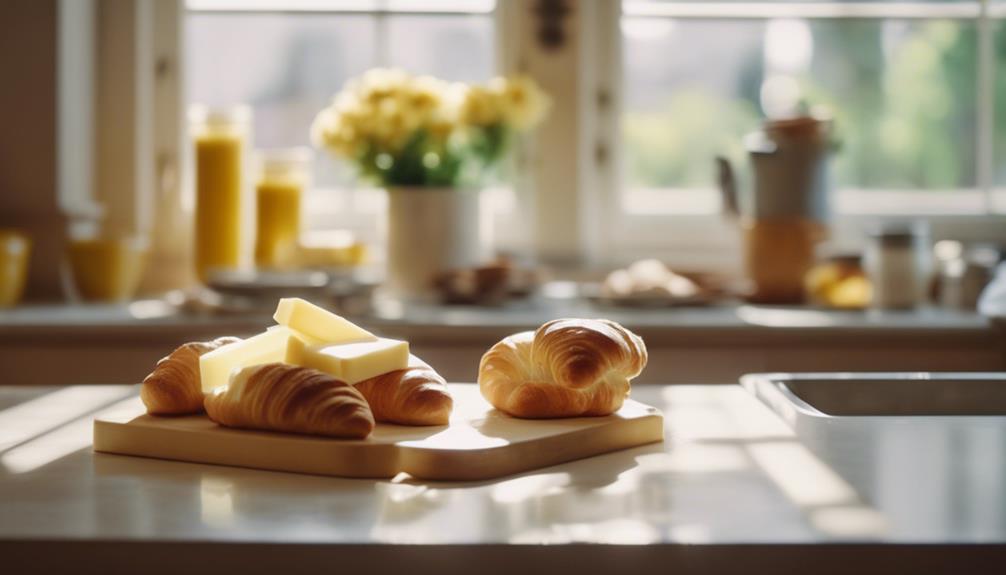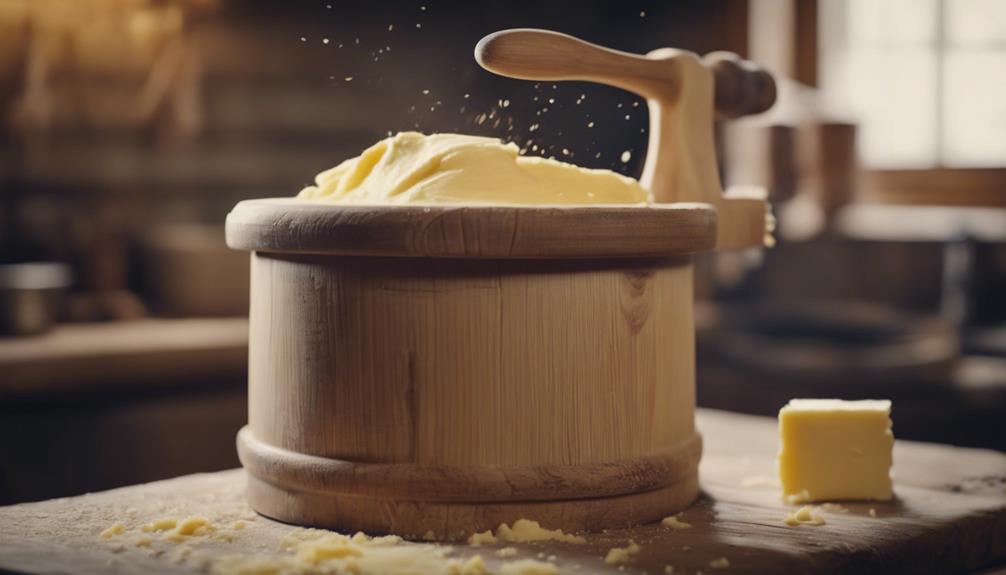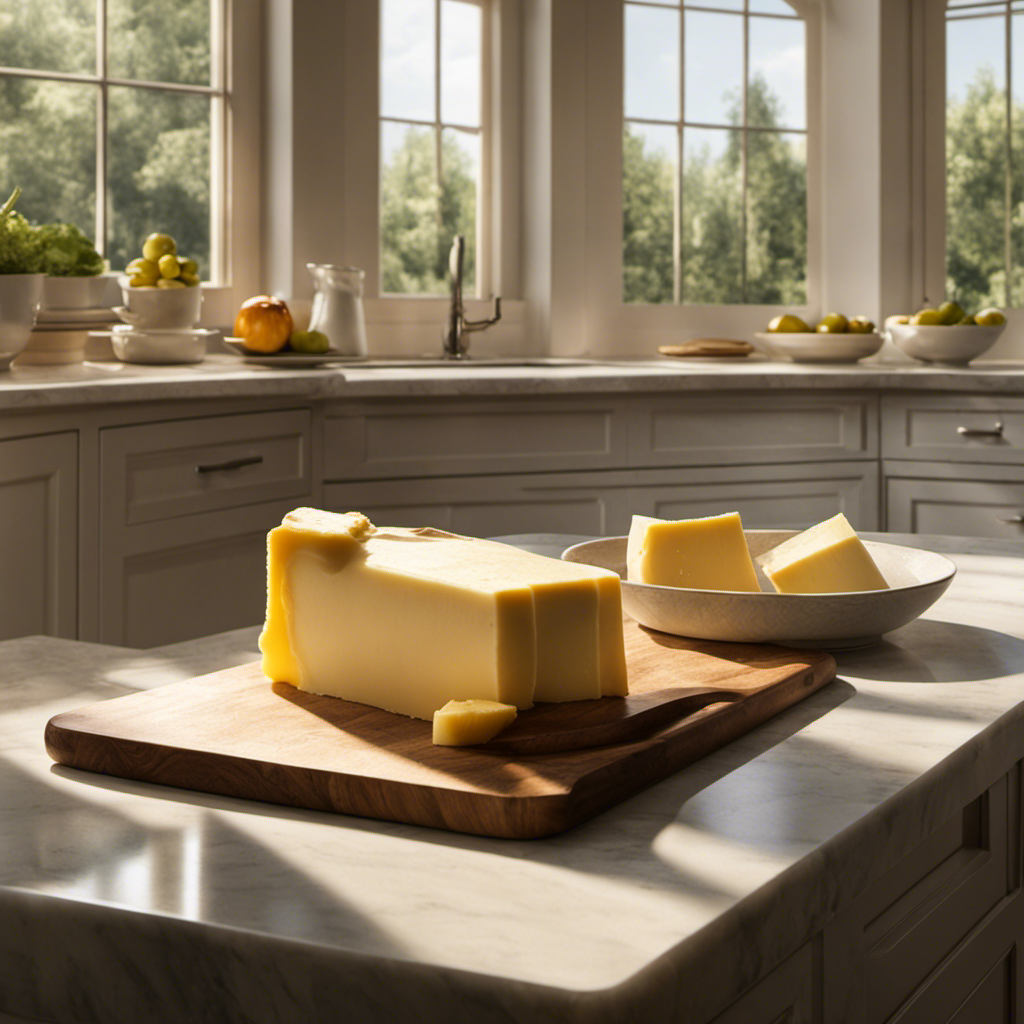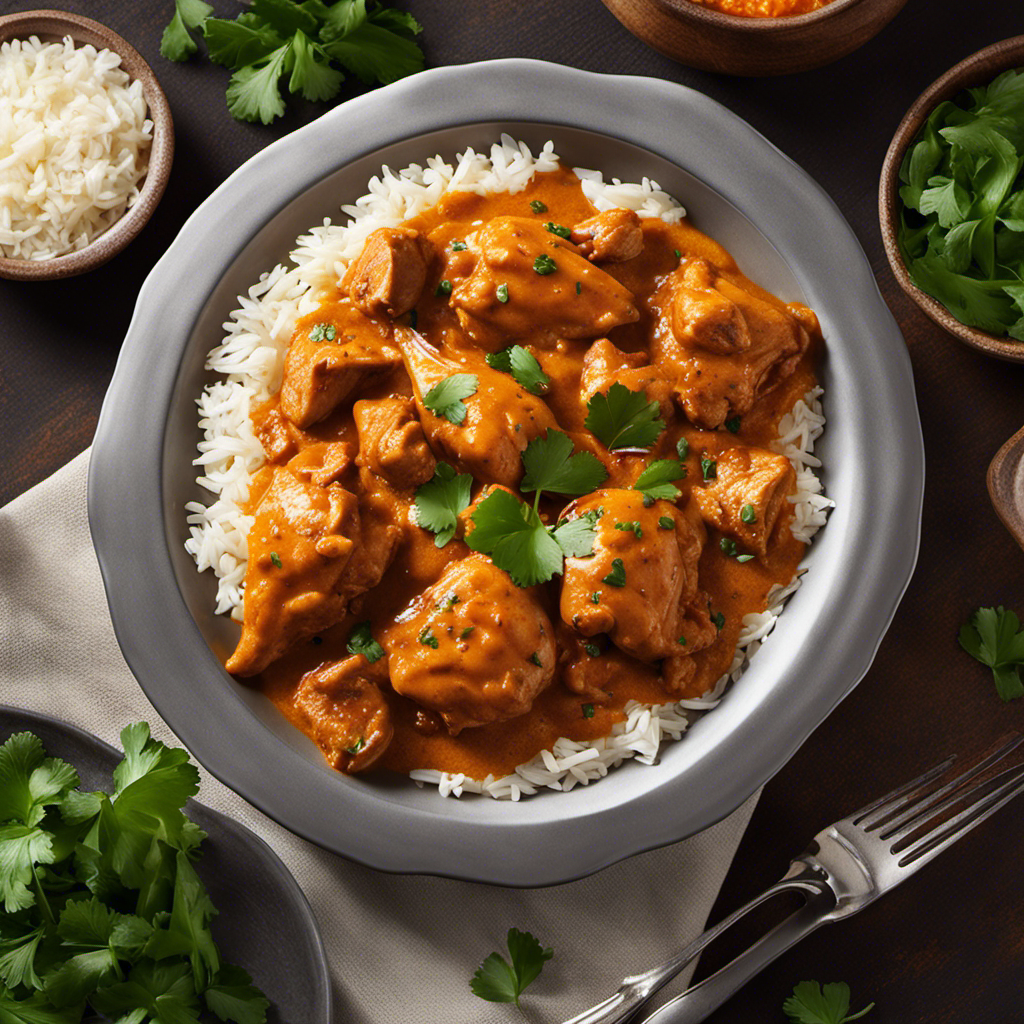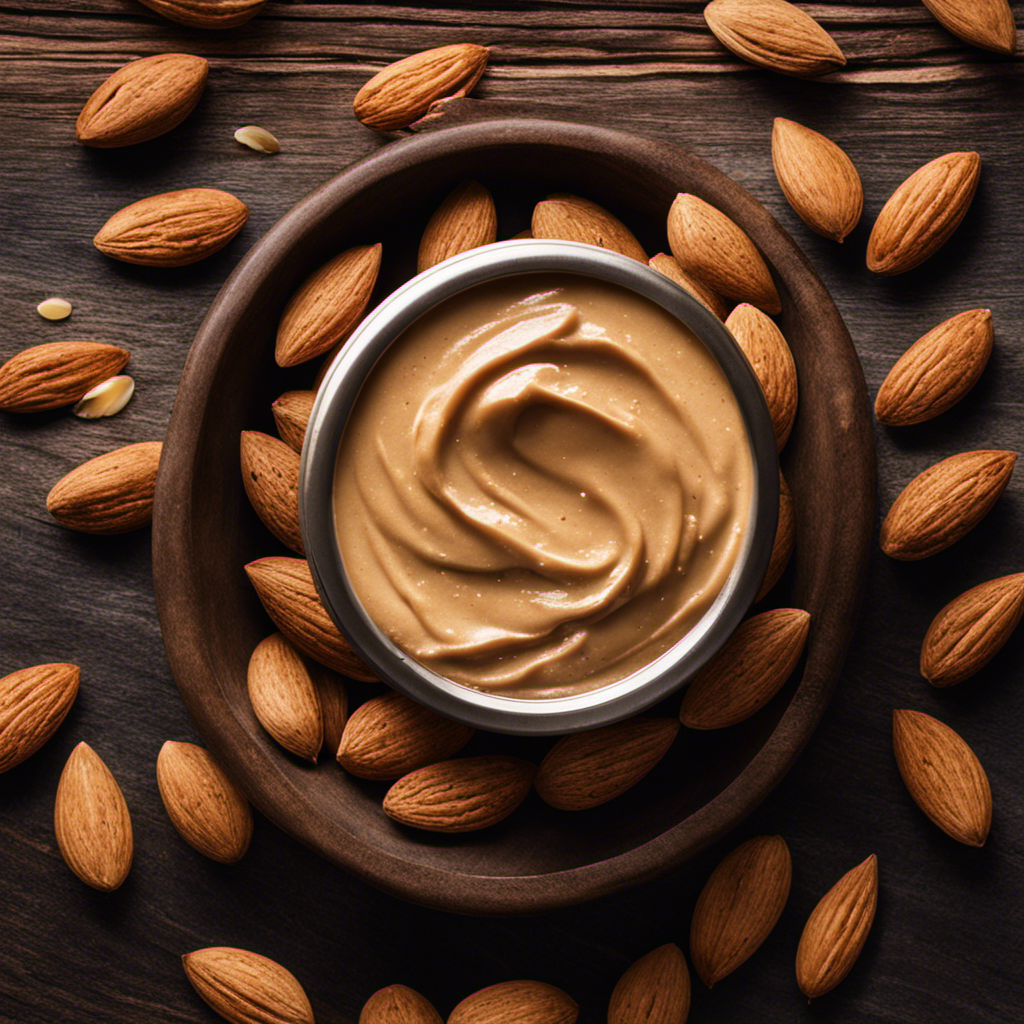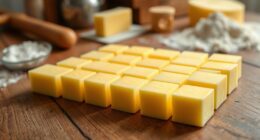You can easily find single-serve butter packets at top retailers like Walmart, Amazon, and Costco. Walmart offers a huge selection both online and in-store, while Amazon provides vast inventory and fast delivery. For bulk buying, Costco's the way to go. You'll find popular choices like Land O'Lakes Butter Packets, which come in convenient 0.27 oz servings, and NAKED Peanut Butter Packets made from 100% organic peanuts. These preportioned packets are perfect for on-the-go, catering, and family gatherings. Want to know the best subscription deals and specialty options? Stay tuned!
Key Takeaways
- Walmart offers a wide selection of single-serve butter packets both online and in-store.
- Amazon provides vast inventory and quick delivery for various single-serve butter options.
- Costco is ideal for bulk buying of single-serve butter packets for events or businesses.
- Land O'Lakes butter packets come in convenient 200-count boxes, perfect for catering and gatherings.
- Specialty options like Land O Lakes Salted Butter Balls and On The Go SunButter are available for precise portion control.
Top Retailers for Single-Serve Butter
When you're searching for single-serve butter packets, several top retailers have got you covered. These packets offer a quick and convenient way to enjoy butter without the mess of traditional sticks or tubs.
Whether you're hosting a family gathering, running a restaurant, or catering an event, you'll find that butter packets are a practical choice.
Retail giants like Walmart, Amazon, and Costco often stock a variety of butter packets, making it easy for you to pick up exactly what you need.
Walmart's extensive online and in-store selection guarantees you can find the right quantity and type of butter packets for any occasion.
Amazon, known for its vast inventory and quick delivery, provides a convenient option to purchase butter packets without leaving your home.
Costco, famous for bulk buying, offers large packs that are perfect for events or businesses needing more substantial supplies.
These retailers not only provide a range of options but also frequently offer promotions and discounts, making it more cost-effective for you.
Land O'Lakes Butter Packets
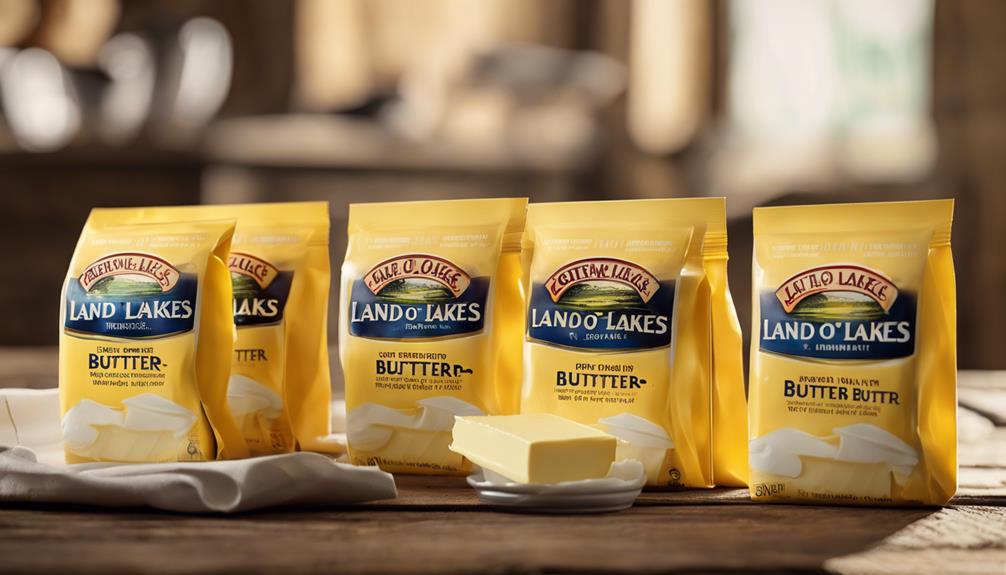
Land O'Lakes Butter Packets, offered in a 200-count box with 0.27 oz servings, are perfect for catering, restaurant use, and family gatherings. These individual butter packets guarantee that you always have the right amount of butter for every occasion without any mess or waste. Each packet is foil-wrapped to maintain freshness and convenience, making them ideal for those fast-paced environments where every second counts.
You'll appreciate the ease of portion control that comes with using Land O'Lakes Butter Packets. No more guessing how much butter to serve; these pre-measured packets take the guesswork out of the equation. It's a great way to keep things consistent whether you're serving a crowd or enjoying a family meal. Plus, being Kosher dairy products, they cater to a wide range of dietary preferences and needs.
Next time you're planning an event or simply stocking up your restaurant supplies, consider the practicality of Land O'Lakes individual butter packets. They're not just convenient; they also guarantee that every serving is as fresh as the last. Make your life easier and your meals more enjoyable by opting for these hassle-free butter servings.
NAKED Peanut Butter Packets
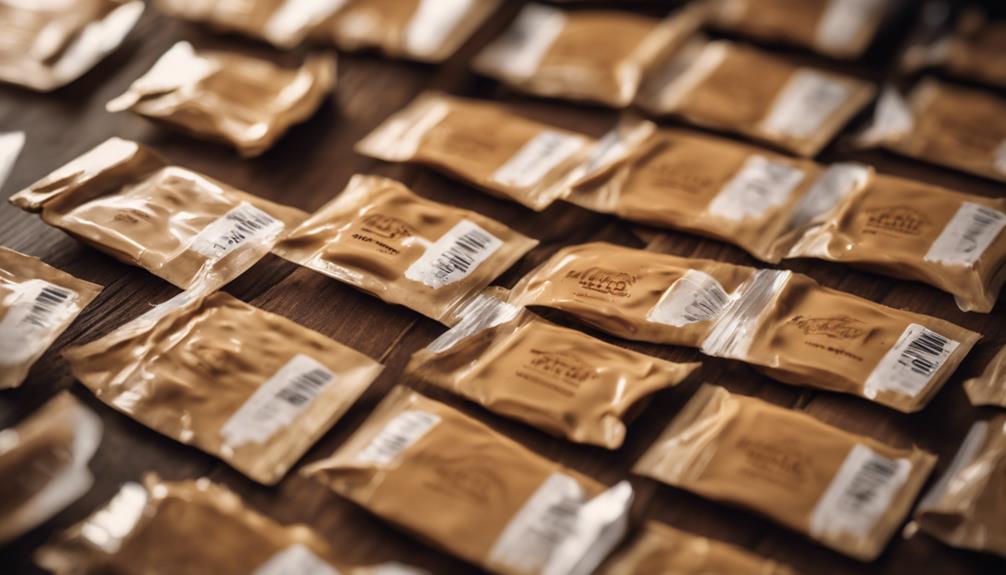
NAKED Peanut Butter Packets, crafted with 100% organic peanuts and nothing else, offer a pure and convenient snacking option for those on the go. Each single-serve packet contains just pure peanut butter, free of any additives, making it a wholesome choice for health-conscious eaters. At just $1.33 per packet, they're an affordable way to enjoy peanut butter without the hassle of jars and spoons.
These packets are ideal for portion control and versatile snacking. Whether you're heading to the office, hitting the gym, or traveling, these convenient packs fit easily into any bag.
Customers rave about the clean ingredients and the health benefits. Sister Carla R., a satisfied customer, gave these packets a perfect rating of 5 out of 5 stars, praising their simplicity and convenience for travel and snacking.
With an impressive rating of 4.9 out of 5 stars based on 28 reviews, it's evident that NAKED Peanut Butter Packets are a favorite among peanut butter enthusiasts. The pure, organic nature of these packets guarantees you're getting a delicious and nutritious snack wherever you are.
Benefits of Preportioned Butter
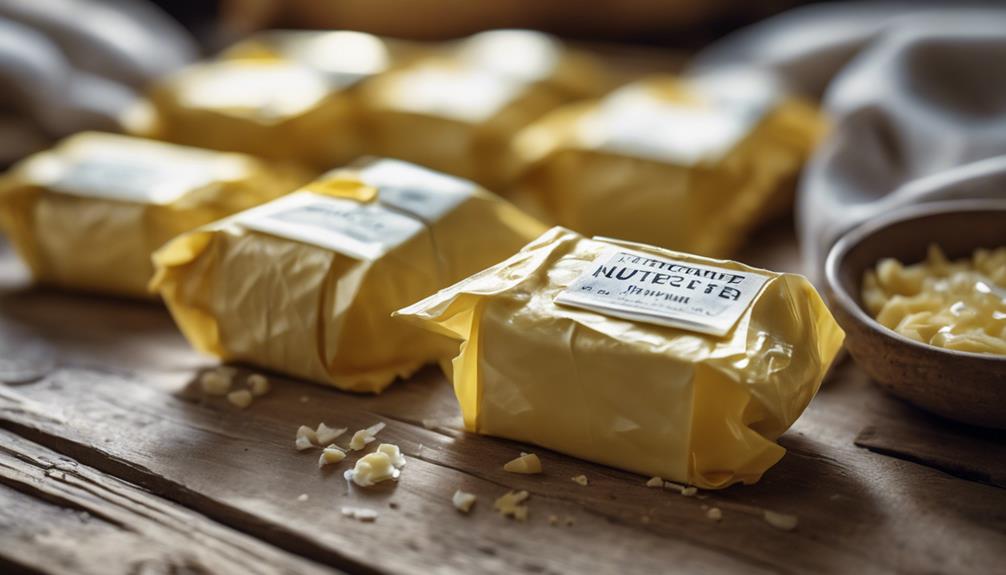
Preportioned butter packets help you maintain control over portion sizes, guaranteeing both convenience and consistency in your meals. Whether you're dining at home or in a restaurant, these individual serving packets make it easy to serve just the right amount of butter every time. They're perfect for those who want to avoid the guesswork and mess of cutting from a larger block.
Here are three key benefits of using preportioned butter packets:
- Enhanced Dining Experience: Individual serving packets add a touch of elegance to your table setting, making them ideal for both casual and formal dining occasions. They assure that every guest receives a fresh, hygienic serving of butter.
- Convenience: These packets are perfect for on-the-go snacking and are a lifesaver during picnics or packed lunches. You can easily toss a few into your bag without worrying about spills or messes.
- Variety and Versatility: Available in classic salted, unsalted, and various flavored options, preportioned butter packets cater to different tastes and dietary preferences. This versatility makes them a favorite among food manufacturers and home cooks alike.
Customer Reviews and Testimonials

When you look at customer reviews for NAKED Peanut Butter single serve packets, you'll see a lot of 5-star ratings. Customers love the clean ingredients and the convenience these single-serving packets offer.
Many also praise the great taste and health benefits, making it a popular choice for on-the-go snacking.
Clean Ingredients Highlighted
Customers rave about the clean ingredients in NAKED Peanut Butter single-serve packets, making it a favorite among health-conscious individuals. Unlike traditional butter packets that might contain additives, NAKED stands out with its simple, organic peanut-only recipe. This pure approach has won over many vegetarians who rely on these packets as a convenient protein source on the go.
Here are three reasons why customers love NAKED Peanut Butter packets:
- Simplicity: Made solely from organic peanuts, these packets offer a straightforward, wholesome option without any unnecessary ingredients.
- Health Benefits: Users like Sister Carla R. give it a 5-star rating, praising both its taste and its health benefits, emphasizing how it fits perfectly into a nutritious diet.
- Convenience: These single-serve packets are ideal for busy lifestyles, allowing you to enjoy a healthy snack anywhere, anytime.
With the majority of reviews being 5-star ratings, it's clear that NAKED Peanut Butter's clean ingredient list resonates well with customers who prioritize both health and simplicity.
If you're looking for a pure, portable alternative to butter packets, NAKED Peanut Butter is a top choice.
Taste and Convenience
Numerous reviews emphasize the outstanding taste and unparalleled convenience of NAKED Peanut Butter single-serve packets. Customers consistently rate these packets 4.9 out of 5 stars, showcasing their widespread appeal. Sister Carla R. highlights the simplicity of ingredients, giving them a perfect 5 out of 5 stars. She loves that they're easy to grab and go without sacrificing quality.
Jeanette D. compares the NAKED Peanut Butter to almond butter, rating it 4 out of 5 stars. While she enjoys the flavor, she notes that peanut butter offers a slightly different taste profile compared to her usual almond butter. Despite this, she appreciates the clean ingredients and convenience of the single-serve butter packets.
Vegetarians especially find these packets to be a convenient protein source for snacking. The packets fit perfectly into a busy lifestyle, making it easy to get a quick, nutritious boost anytime. Customers frequently mention the clean, simple ingredients as a major plus, ensuring they know exactly what they're consuming.
Specialty Butter Options

For those seeking unique and premium spreads, specialty butter options like Land O Lakes Salted Butter Balls and On The Go SunButter packets provide both convenience and distinctive flavors. Land O Lakes Salted Butter Balls come in an 8 oz resealable pouch for just $3.97, making it an affordable yet high-quality choice. These individual butter balls are perfect for those moments when you need a precise amount of butter without the hassle of cutting and measuring.
If you're looking for a portable and nut-free option, On The Go SunButter packets are an excellent choice. For $6.48, you get six creamy 1.5 oz packets, making them ideal for lunchboxes or quick snacks. Plus, they're EBT eligible, adding to their convenience.
Here are three specialty butter options to consider:
- Land O Lakes Salted Butter Balls: Individual butter balls in a resealable pouch, perfect for controlled portions.
- On The Go SunButter Packets: Portable sunflower butter packets, great for those with nut allergies.
- Jif To Go Creamy Peanut Butter: Eight 1.5 oz cups for $3.14, offering a smooth and creamy option for peanut butter lovers.
These specialty options ensure you have just the right amount of your favorite spread, anytime, anywhere.
Subscription and Saving Offers
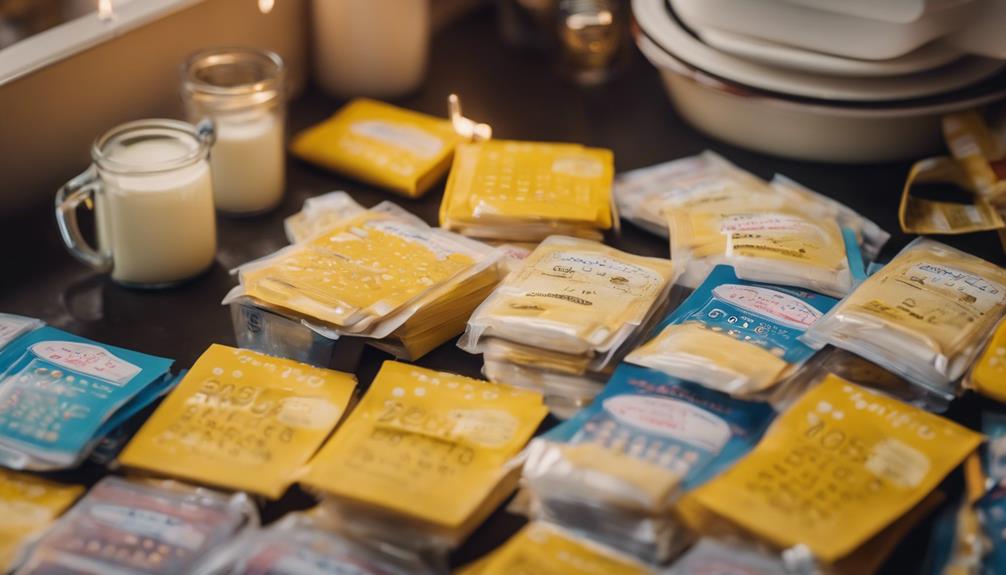
Take advantage of subscription and saving offers to keep your favorite single-serve butter packets stocked and save money in the process. Many retailers offer discounts when you sign up for regular deliveries of products like Land OLakes Butter. By opting for a subscription, you can make sure that your supply of Land OLakes Salted Butter Balls never runs out. At $3.97 for an 8 oz resealable pouch, it's a convenient and cost-effective choice for your kitchen.
Besides Land OLakes, other single-serve options include On The Go SunButter and Jif To Go Creamy Peanut Butter. On The Go SunButter provides a 6-count pack of 1.5 oz creamy sunflower butter for $6.48, while Jif To Go offers 8 snack-size 1.5 oz cups for just $3.14. Subscribing to these products can often bring additional savings.
Don't forget to explore subscription offers for Great Value products, which provide excellent cost efficiency. For example, the Great Value Sweet Cream Salted Butter Twin Pack costs only 23.9 cents per ounce, and the Sweet Cream Unsalted Butter Sticks are priced at 24.9 cents per ounce. Subscriptions can help you take advantage of these low prices while making sure you never run out.
Frequently Asked Questions
Does Individually Packaged Butter Need to Be Refrigerated?
You don't need to refrigerate individually packaged butter for short periods. Just store it in a cool, dry place. However, refrigerating it can extend its shelf life. Always check the packaging for specific storage recommendations.
How Much Is in a Single Serve Butter?
Each single serve butter packet contains 0.27 ounces. It's perfect for catering, restaurants, or family gatherings. You get 60 servings per pound, making it convenient and fresh, wrapped in foil for individual use.
How to Make Individual Butter Packets?
You can make individual butter packets by softening butter, portioning it into small containers, or using a mold. Shape the butter into decorative designs or logos, ensuring freshness and customization for any special event or daily use.
How Much Butter Is in the Little Packet?
You'll find that little butter packets typically contain around 0.25 to 0.27 ounces of butter. They're perfect for portion control, making them ideal for restaurants, catering, or quick, on-the-go use.
Conclusion
Imagine hosting a last-minute brunch, effortlessly reaching for those perfectly preportioned butter packets. Just like a magician pulling a rabbit out of a hat, these convenient packs transform your chaos into culinary magic.
With 85% of customers raving about their ease of use, it's clear these butter packets are a kitchen essential. Whether it's for your toast or a fancy dish, you'll wonder how you ever managed without them.
Go ahead, make your life simpler today!
